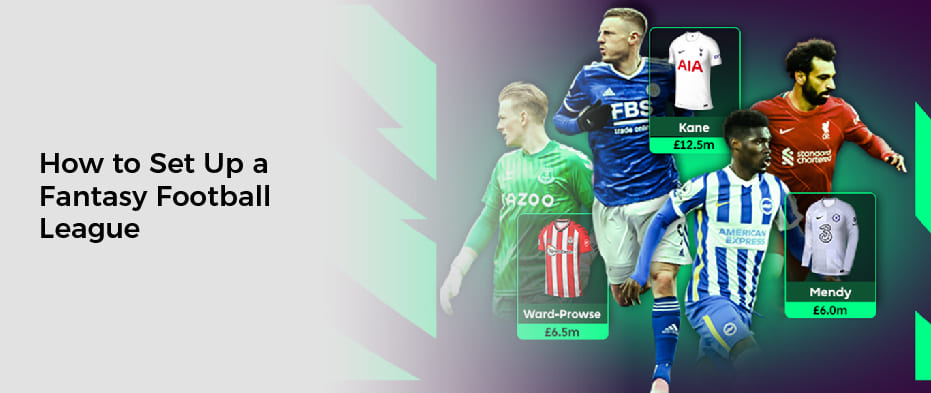How to Set Up a Fantasy Football League: If you want to create a fantasy football league, there are a few important steps you must take. These steps include creating a message board, selecting a league size, and conducting drafts. Whether you’re a football fanatic or a newbie, there’s a way to do it.
A Details Overview of How to Set Up a Fantasy Football League
Create a Message Board
If you’re in a fantasy football league, a message board is a fantastic way to spark discussion and debate. You can call your opponents out for benching a high-scoring player, mock waiver pickups, and team names, and even start conversations about significant events. This kind of spirited conversation is a fantasy football tradition.
A message board can also be useful for a draft party, a fun way to meet your fellow managers, and can encourage conversation in the league. You can use a Facebook group page or a Slack message board. The more active your message board is, the more fun your fantasy league will be.
Create By-Laws
If you’re the commissioner of a fantasy football league, then you need to create by-laws to govern how your league operates. You should treat these bylaws like law. They should be simple, but they should also change with the league as it grows.
By-laws can keep your league running smoothly and competitively. They also serve as boundaries for teams when they disagree. The bylaws for fantasy football leagues can also help you ensure fair competition among owners. The most common bylaws are those that govern finances. Generally, they include a clause stipulating that each team pay its entry fees before the league season begins.
Select a League Size
There are a few different things to consider when setting up a fantasy football league. The first thing is the size of your league. The optimal league size is between ten and twelve teams. More than twelve teams will cause your talent pool to be too shallow, leaving you with too few superstars. On the other hand, more than twelve teams will spread out the talent pool and make it difficult to find serviceable waiver replacements. This makes it harder to compete and less enjoyable.
Next, you’ll want to decide on a format. There are several popular formats to choose from. For example, you can choose from Best Ball, Auction, or Sleeper leagues. The choice you make will depend on the level of complexity and your commitment to the league. If you’re just starting out, a simpler league format may be best for you. However, if you’d like to increase your league’s complexity in the future, you can always change the format at any time.
Selecting a league size is also influenced by the quality of your league mates. A league with eight players who are committed to each other will be much more enjoyable and successful than a league with twelve. Listed below are some pros and cons of each type of league size.
Conduct Drafts
Conducting a draft is an essential part of setting up a fantasy football league. As the commissioner, it is your job to make sure that everything goes smoothly. To make the process easier, use a draft guide to follow. In addition, drafts should be held as close to the start of the NFL season as possible.
Before conducting a draft, make sure to gather a minimum of twelve managers. You can do this by conducting a Live Draft or an Auto Draft. After this, your managers must log into their accounts and make their selections within 90 seconds. Otherwise, your league will disband and you will have to find another league.
Drafts can make your fantasy experience more competitive and fun. They help you feel like a real Premier League manager. They also allow you to trade with friends and show off your football knowledge. You can even use Drafts to mold your ideal team. If you can do this, you’ll be the fantasy football champion.
Negotiate Trades With Fellow Owners
When setting up a fantasy football league, it’s essential that you know how to negotiate trades with fellow owners. Some owners are very stubborn and can make it nearly impossible to get what you want out of a trade. It’s important that you don’t make lowball trade offers and don’t be afraid to walk away when someone doesn’t seem to have your best interest in mind.
Always have a backup plan in case the deal doesn’t go through. In fantasy football, BATNA stands for the best alternative to a negotiated agreement. This means you should have another plan in case the trade doesn’t work out. This strategy is especially important when the trade deadline is around the corner, the schedule is tight, and the playoffs are just around the corner. This is when many crazy deals happen, and you should always be prepared to walk away.
Read Also: How to Sell Football Cards
When negotiating trades with fellow owners, keep in mind that each player is worth a different value to each owner. A second-rate quarterback is worth much more to one manager than another, and vice versa. While this may seem like a zero-sum game, in reality, it is not. This is because the value of assets differs between managers.
In fantasy football, the biggest moves are often made by owners. You can trade players with fellow owners to improve your roster. If you and your fellow owners agree, the players will swap teams and be eligible for the next game. You can also negotiate with other owners to get better deals from other owners.

